Italianate: An architectural style familiar to Cincinnatians; to me, this word means history, it means culture and the effect of row after row of rooftops overlooking the city. – David Falk, Cincinnati restaurateur, Huffington Post
Over-the-Rhine (“über dem Rhein.” in German) is a Cincinnati neighborhood that got its name from the Germans that transformed the area in the mid-1800s from farms and gardens to a vibrant community. Its name came from the fact that residents had to cross the Miami-Erie Canal that separated the neighborhood from downtown. (Today, the former canal is Central Parkway, a large thoroughfare.)
It was this wave of working-class German immigrants that brought Italianate architecture to Cincinnati. This scale-down version of Italian palaces met their needs because there were affordable to build on narrow lots.
At one time, more than 45,000 people lived in Over-the-Rhine (OTR), of which 75% were first or second generation German-Americans. Given the German culture’s love for beer, Cincinnati’s historic brewery district was born, which also employed thousands. OTR also became home to Cincinnati landmarks as Music Hall, Findlay Market, historic churches, Washington Park, Memorial Hall, and more.
 Many left the neighborhood due to the anti-German sentiment of World War I. Coupled that with Prohibition, OTR changed. Although many Appalachians became residents, the neighborhood remained vibrant. The 1960s brought interstates to urban areas, and OTR became flanked by I-75 and I-71. Suburbia began to grow, and the neighborhood’s demographics continued to change – eventually leaving this neighborhood to the poor.
Many left the neighborhood due to the anti-German sentiment of World War I. Coupled that with Prohibition, OTR changed. Although many Appalachians became residents, the neighborhood remained vibrant. The 1960s brought interstates to urban areas, and OTR became flanked by I-75 and I-71. Suburbia began to grow, and the neighborhood’s demographics continued to change – eventually leaving this neighborhood to the poor.
 By 2000, the once-proud neighborhood was the poster for urban blight – deteriorating buildings, walls separating, broken windows, unsanitary living quarters, drugs, shootings, and high crime. With an average median income of $10,000 per household, OTR was also the home for many social agencies.
By 2000, the once-proud neighborhood was the poster for urban blight – deteriorating buildings, walls separating, broken windows, unsanitary living quarters, drugs, shootings, and high crime. With an average median income of $10,000 per household, OTR was also the home for many social agencies.
“One of the most dangerous neighborhoods in the country” would be added to a neighborhood that in 1983 received distinction of a historic district listed in the National Register of Historic Places that has significance to other historic neighborhoods as in Savannah (Georgia), Charleston (South Carolina), the French Quarter (New Orleans), and Greenwich Village (New York City).
 In 2003, Cincinnati Center City Development Corp (3CDC) formed to transform the area. After all, the 360 acres of historic distinction was home to 943 buildings of Italianate architecture from the 19th century. Besides, given the historic distinction, tearing down buildings is not an option – so change became the order.
In 2003, Cincinnati Center City Development Corp (3CDC) formed to transform the area. After all, the 360 acres of historic distinction was home to 943 buildings of Italianate architecture from the 19th century. Besides, given the historic distinction, tearing down buildings is not an option – so change became the order.
With 3CDC leading the charge, millions have been spent to rehabilitate the historic neighborhood to restore buildings, renovate Washington Park, improve streetscape, add green space, and develop  commercial space. Yes – OTR is rapidly changing. Suburban friends of ours recently purchased a building to rehabilitate into their future home.
commercial space. Yes – OTR is rapidly changing. Suburban friends of ours recently purchased a building to rehabilitate into their future home.
Last October, a friend and I decided to walk around Over-the-Rhine. Transformation is evident by site of active construction workers and buildings are various stages of restoration. Mixed within the new, social agencies remain to care for the many that remain needy – causing me to wonder where they will go. Nonetheless, vibrancy is returning to this historical, once-vibrant neighborhood. After all, a Graeter’s has also arrived in OTR.
You (Cincinnati) are no longer that embarrassing girlfriend I don’t tell my friends about, insecure and self-conscious. You are alive and breathing in gasps of energy, and I scream my love for you from the Italianate rooftops. David Falk, Cincinnati restaurateur, Huffington Post
On a beautiful day, we walked a lot, saw a lot, and always felt safe. Enjoy the pictures of this historic Cincinnati neighborhood. Any thoughts?
Additional References

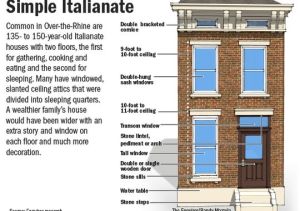

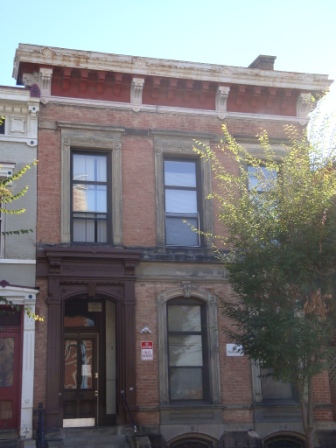
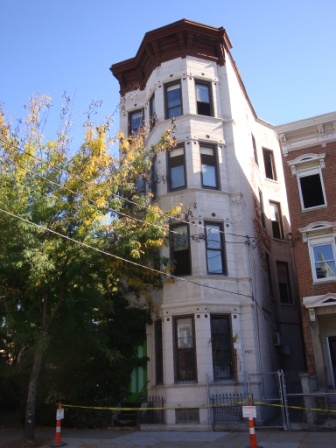
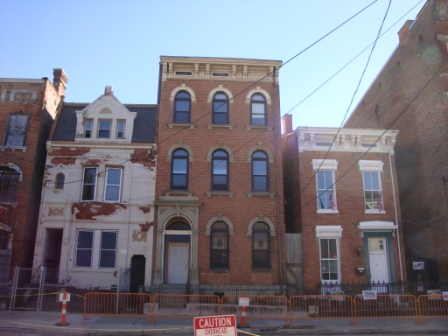
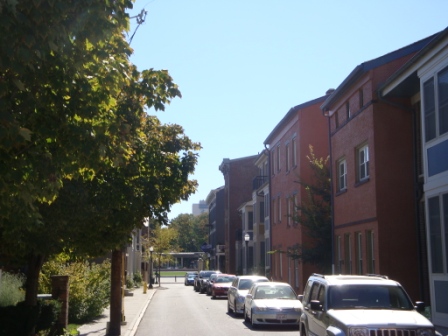




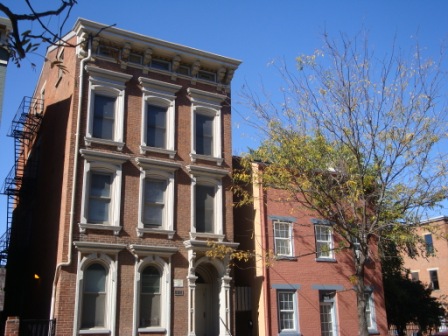
Fascinating. I love to see the restoration taking root and moving the community forward.
LikeLike
Patti,
Forward movement it is … still a ways to go, but still forward. Glad you enjoyed the tour!
LikeLike
It is wonderful to see these areas rejuvenated. I do worry about just exactly what happens to the former residents, though. The ones who can’t afford the spiffy versions.
I lived on Capitol Hill in the 80’s when it was in transition. There was much disharmony and much adaptability Interesting times.
LikeLike
Elyse,
It seems that developers what this to be a “mixed” neighborhood. Currently, it is … but time will tell what happens in the future. As you know, problems don’t go way, they move.
LikeLike
Good for you, for getting down and dirty and seeing for yourself. I am not that familiar with your Cinci; just kinda waved to it on my way to Lexington a few times. Never close enough to see the deterioration in buildings and the plight of people in the neighbourhoods touched by social and economic changes to the worst. In many cities, one area gets forgotten while another gets all the attention -they say it is, “better and cheaper to build new” -that translates to miles of cookie-cutter burbs and ump-tine times box stores for the city mice to scurry in and out of.
LikeLike
Hudson,
Forgotten and attention are great words to describe what is going on. I’m one who sees many things as cyclical … thus the burbs renewal is in the future. Meanwhile, much work to do still in OTR, but it is interesting!
LikeLike
Thanks for the history, Frank. I love the architecture. So cool.
LikeLike
Amy,
The transformation of this area is very interesting …. especially because of the low point of not so long ago.
LikeLike
My initial thought is maybe you should invest in a property now, Frank. It sounds like this is going to be very hot real estate very soon. Get in on it now before overseas investors get wind of it. They already own most of Manhattan.
LikeLike
Lame,
Although I haven’t considered it as a place to live, I am curious about the actual home values. To your point, 3CDC is Cincinnati based.
LikeLike
Fabulous architecture Frank and I enjoyed that history lesson too. It is always of concern though when the poor and needy are not mentioned in plans to up-market their home areas. They are people too.
LikeLike
Pauline,
The transformation is interesting … and yes, your points about the poor is well taken because I wonder them.
LikeLike
I really love hearing about this transformation-in-progress, Frank. I feel like many of the city planners, city and state government agencies, and dedicated individuals from all over the country have finally gotten it straight that urban blight hurts all of us. It takes so much money and work to reinvest in these neighborhoods and restore some gentility, but that’s what I see in these colorful and interesting homes and buildings. They’ve been given a second chance, and I think this time they’ll be fully appreciated. There are parts of Los Angeles that are definitely in this same state of slow recovery. Your photos and walking history tour is really special to see. Thank you for sharing it. 🙂
LikeLike
Debra,
Well said. I’ve got the feeling various aspects of urban renewal is happening throughout the country. To me, one of the downside is where do the people go …. I guess other areas with low rent, thus the problems shift.I have another post in the queue about this area.
LikeLike
Seems it would be amazing, I love architecture but not concrete taller buildings as in my city 🙂 Thank you dear Frank, love, nia
LikeLike
Nia,
I’m not surprised that you appreciate this area of the city.
LikeLike
I am fascinated by the architecture… and what a project to renovate these historical buildings…
LikeLike
Bulldog,
OTR is a hotbed of activity … also means many of the problems associated with blight remains at the moment. But the architecture also captures my attention.
LikeLike
That wonderful historic architecture is certainly worth restoring, Frank. Interesting set of pics. 🙂
LikeLike
Sylvia,
Glad you enjoy the historic journey.
LikeLike
Looks like a north European city – which is not surprising!
LikeLike
GFB,
Not surprising since Germans built this area.
LikeLike
I just slapped myself on the head with a kipper berating my stupid comment!
LikeLike
Oh no … not the dreaded kipper!!! What’s a kipper?
LikeLike
It is a smoked herring – tasty if smelly – Just beaten myself again with it – one gets a taste for this kinda thing!
LikeLike
Thanks for the info … enjoy yourself.
LikeLike
Beautiful architecture. It’s so nice seeing communities renovating old buildings rather than demolishing them to build “modern” ones! Lovely walk, Frank! Happy Thursday! 🙂
LikeLike
Marina,
OTR is an interesting place. These photos are from the fall, so I imagine my friend and I will return someday this summer.
LikeLike
Great tour as usual.
LikeLike
John,
Thanks for coming along.
LikeLike
I prefer the old architecture more than the new. The old seems to have more character and tells a story, whereas these mirrored/glass buildings erected today, say nothing to me.
LikeLike
Catherine,
There’s definitely no shortage of architectural character in this historic neighborhood!
LikeLike
So glad to see this vibrancy coming to Cinci. The history is incredible. I, like some of your other commenters, hope that there will be a workable plan to accommodate the poor.
LikeLike
E-Tom,
I do wonder about those displaced, thus a good question is regarding a plan and/or assistance for those displaced. Currently, I find it interesting that social service agencies are quite noticeable among the construction … so the need is still high in that neighborhood.
LikeLike
It has been quite some time since I visited OTR. Cincy has such a lovely and colorful history. I am happy to see that there is a push to revitalize and hold on to it;)
LikeLike
Kimberly,
Put an OTR visit on your to-do list the next time you are in town …. and they have a Graeter’s!
LikeLike
I love the buildings and the thought of saving it. I worry though that suddenly it is another place the original members of the community will suddenly find themselves pushed out with nowhere to go.
LikeLike
Val,
No question to it is a place in transition, and I believe the community’s goal is to be a socio-economic mix. Prior to the renovation efforts, it was the worst part of the city. Then again, the worst area can (and no doubt will) relocate.
LikeLike
Too true Frank. As I work toward restoration in my own life and consider all my opportunities one of the cities I am considering is Detroit (shock I know). But they are undergoing a huge restoration and there is a renaissance underway in many parts of the city, it simply isn’t talked about very much. So I get it, I do.
LikeLike
With so much empty, renovation opportunities are abound in Detroit. Then again, with so many pickings, careful selection would be of utmost importance. On the downside, you would miss the humidity.
LikeLike
I would miss much, but Dallas isn’t humid it is just Dallas. I would miss my children and grandchildren. That is what airports and planes are for. Right now though I am focused on what is right for me.
LikeLike
Absolutely in terms family. In terms of humidity, I know Dallas is not Houston, but Detroit is not Dallas … and I know you like the hot weather!
LikeLike
Yes, I do. Yet still, it must come down to doing what is right for me now and for the last working years of my life. So I leave my options open and pick the cities that appeal on levels that include work, balance and things other than heat.
LikeLike
Good self analysis of your needs and situation … BTW … Lands End sells warm winter coats.
LikeLike
Shockingly Frank, because I have always traveled for my work I own two or three including a fur (shhhh, don’t tell Peta).
🙂
LikeLike
LOL … and I forgot about all the travels!
LikeLike
very, very interesting! Thank you!
LikeLike
Resa,
… and thank you!
LikeLike
Architecture is so fascinating. Such beautiful craftsmanship. There’s quite a bit of GErman influence here. Some of these are so similar to very small old towns around the state. Rich people would hire German building crews that traveled around building town buildings/courthouses.
Thanks for the info and pictures – hope the cherishing of old building grows!
LikeLike
Mouse,
No matter the location, architecture from that period is beautiful … and many there are many locations throughout the country getting a facelift … and so many more waiting.
LikeLike
I’m so glad to see you showcasing Over the Rhine as it should be. Cincinnati is a lovely, interesting city. Home to Doris Day and Andy Williams and even Steven Spielberg. yowzaaaa From driving the banks of the Ohio River, to the green neighborhoods that surprise with deer, and the history of the Tafts. Walking with friends from the hotels around Fountain Square, we always end up at a great eatery/bar. Love the murals, the architecture and the cool breeze of the Ohio River. We don’t “fear for our lives” but we are careful.
LikeLike
Georgette,
Thanks so much for sharing your experiences with my city. Nothing like an honest opinion from an outsider. Hope you get a chance to make it to OTR & Findlay Market during the daylight hours!
LikeLike
A nice post & series of photos. So sad to see a town once flourishing go down. Great to see when it starts coming back to life!
LikeLike
Pingback: On a Grand Hall | A Frank Angle
Thank you so very much for highlighting the simpler version of the Italianate architecture style. The individual Robert Papper home was done in a similar fashion with the windows being similar and the details are emphasized in dramatic black and white.
My Grandmother came from Germany and met my Swedish Grandpa in New York City. I have two exes from Cincinnati and love Seven Hills. My Dad was born in inner city Cincy and hope people will check out this old neighborhood.
My Dad hitchhiked to Covington to sweep put White Castle to help pay rent with his Mom. His Dad was a Veteran in the Veterans hospital down there. himself into someone I was proud to say worked from age 11 until 55, attended UC and married Mom who got her Master’s there. Lots of “ties” in this blog post to my family history, Frank. Thank you again for adding this l
LikeLike